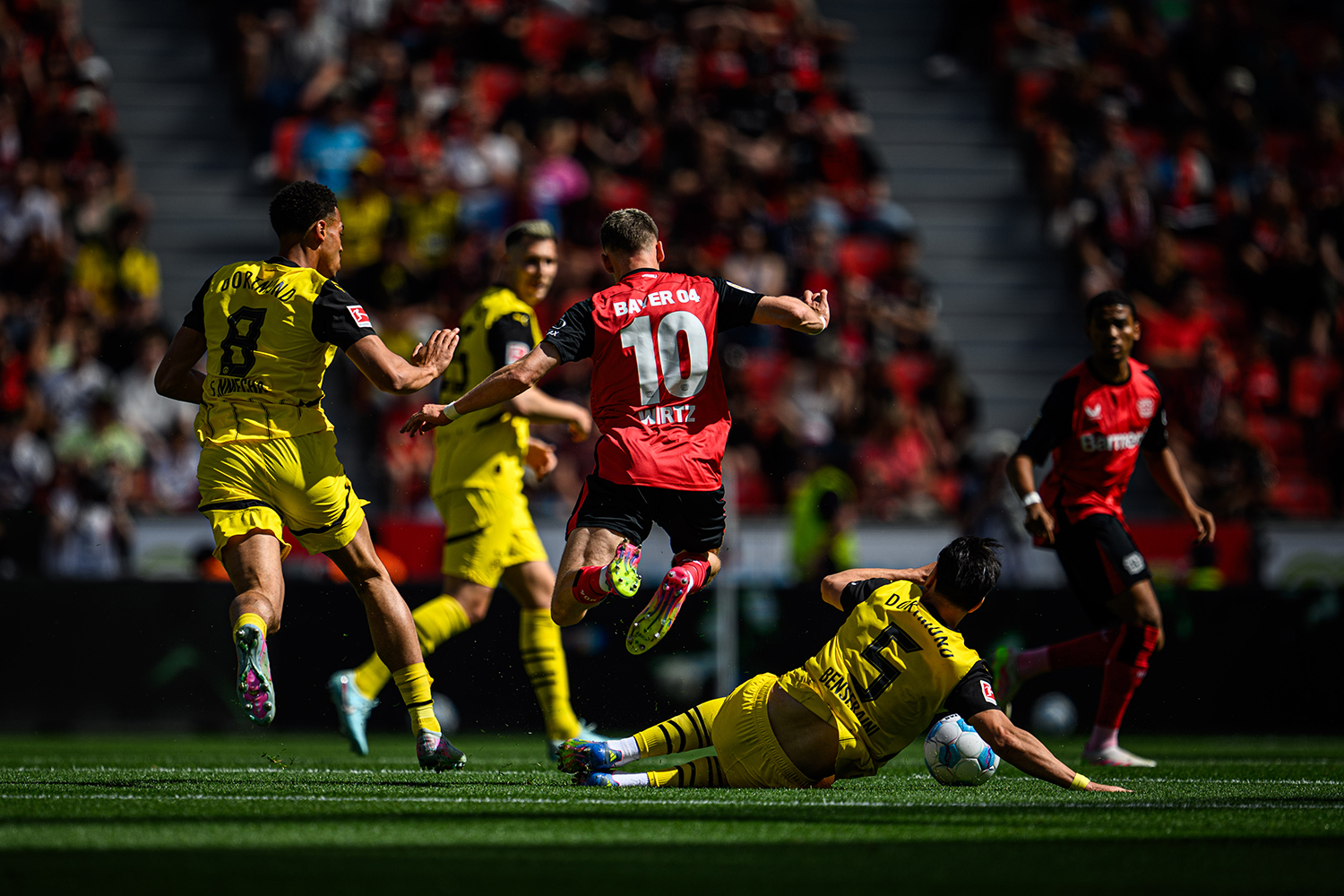They had called it Florian Friday.
More than a month had passed since Manchester City had withdrawn their candidacy to sign Florian Wirtz.
It had been three weeks since the 22-year-old’s representatives had informed another suitor, Bayern Munich, that he intended to sign for Liverpool. And a week or so had elapsed since Liverpool agreed a fee, rising to £116million, with his current club, Bayer Leverkusen.
Still, though, it took until 7pm on Friday before we saw him posed behind a desk, a pen in his hand and a mock contract in his eyeline, flashing a toothsome grin as he held up a Liverpool shirt.
The deal existed in a sort of purgatory, a transfer that felt complete but not yet real.
The transfer market is not designed for delayed gratification. It does not have a slow-release metabolism. Then, on Thursday, he was apparently filmed arriving at Cologne-Bonn airport, ready to fly to England for a two-stage medical, the final obstacle to clear before a deal of rare significance.
It is, by some distance, the most expensive transfer in Liverpool’s history. It will, if all the various clauses are met, become the most expensive transfer in British history, too.
More intriguingly than both, though, it also represents the revival of a position not all that long ago declared “extinct”, in the words of Juan Mata, and “completely lost”, as Kaká once put it. Wirtz is, after all, primarily a No 10, a role that seemed more or less defunct at football’s hyper-systematised, tactically constrained cutting edge.
The explanations for that have been many and varied. Kaká, speaking to the Spanish outlet Marca a couple of years ago, suggested it had to do with the rise of the pressing game, which only works when teams play high defensive lines, squeezing the play. “With defences so advanced there is hardly any space left in the centre of the field,” the Brazilian said.
Interpreting changes in football through a purely tactical lens, though, can be distorting. It is relevant, for example, that the game’s default formation seems to have shifted in recent years away from what might roughly be described as a 4-2-3-1 – a shape in which a No 10, or something like it, might be incorporated – toward a 4-3-3, in which the creative burden falls on what have become known as inverted wingers.
But that does not provide a complete picture; changes in football tend, ultimately, to denote technological and cultural shifts. The rise of data – particularly related to physical output – has encouraged coaches to evaluate players by what can be tracked and measured; imagination, until relatively recently, did not fall into that category.
Likewise, the game’s ever-expanding knowledge means opponents tend to know absolutely everything about the team they are facing. Deploying just one player as the creative fulcrum, in that context, is counter-intuitive.
It is curious, then, that while Wirtz might be the costliest No 10 to have moved clubs this summer, he is not the only one. City, having decided not to pursue a move for the German, paid Lyon £34 million for the 21-year-old Rayan Cherki.
Had that fallen through, City had been contemplating a (probably much more expensive) move for Morgan Gibbs-White, the Nottingham Forest captain.
Pep Guardiola, City’s manager, did not sound wholly convinced by Cherki’s arrival after watching his debut against Wydad Casablanca in the Club World Cup. He said they had decided to sign the French international for his “incredible skills close to the box and great vision”.
Perhaps it is reading too much into his words to suggest they come across as just a little ambivalent: he was speaking in his third language immediately after a game; Guardiola is within his rights not to have expressed himself absolutely perfectly.
Still, it would not be a complete surprise if Guardiola had required a little convincing. Cherki has long had a reputation as a challenging character: Lyon’s owner, John Textor, once referred to him as a “little asshole” when trying to sell him to another club, although it should be pointed out he soon withdrew that comment, describing him as a “good kid” surrounded by an entourage of “assholes”. His former Lyon team-mate, Alexandre Lacazette, has suggested that something “clicked” this season, too, helping Cherki to make the most of his talent.
That City – with or without Guardiola’s express approval – have been prepared to take that risk, though, is a reminder that some things do not really change. The role that Wirtz and Cherki prefer has been called by different names over the years: fans of a certain vintage might prefer “schemer”; others would go with playmaker.
In Italy, and to those who do not wear their worldliness lightly, they are either a trequartista or a fantasista. Now, in recruitment circles, clubs tend to talk about a “locksmith”: someone capable of picking their way through the major leagues’ increasingly well-drilled defences.
Like Cherki, like Chelsea’s Cole Palmer, like his international team-mate Jamal Musiala, Wirtz fits that bill.
“He has a naturalness that can’t be coached,” as Joachim Löw, his former coach with the German national team, said. Xabi Alonso, who oversaw his rise at Leverkusen, praised his ability not to make “the most brilliant move, but the best and smartest”.
That ability, of course, has always been prized; what has changed is the fact that those players who possess it are no longer able to rely on it. They need another string to their bow. In Wirtz’s case, that is his pressing; in Palmer’s, on the other hand, it is his capacity to drift wide, to occupy two roles at once. Mata and Kaká – among many others – were not quite right.
There has been an inclination to put the No 10 on the endangered list for years, to believe that the golden days of those players “who carry within them our hope for, and belief in, a better game,” as Richard Williams put it in his book, Perfect 10, have gone.
But the No 10 has never really disappeared. It has just adapted and evolved to the game around it, by whatever name it is known.
Photograph by Lukas Schulze/Getty Images

